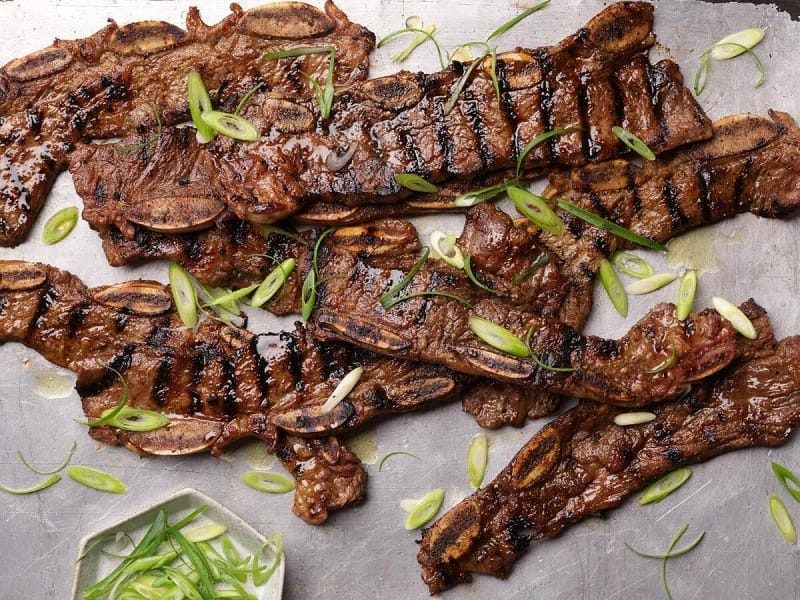When it comes to preparing a mouth-watering rib dish, the choice between short ribs and spare ribs can leave many stumped. Both cuts of meat are popular among barbecue enthusiasts and gourmet chefs, revered for their flavor and succulence.
However, despite their similarities, short and spare ribs hail from different parts of the animal and offer distinct tastes, textures, and cooking methods.
Origins of the Ribs: Where The Difference Begins
Short Ribs: They are cut from the beef’s lower rib section, specifically the brisket, chuck, plate, or rib areas. This cut consists of a short portion of the rib bone, which is overlain by meat and varies in thickness. One notable characteristic is their marbling, which contributes to their rich flavor and tenderness when cooked.
Spare Ribs: They come from the lower portion of a pig’s rib cage, from the belly side, just above the sternum. Compared to short ribs, they are longer, flatter, and have more bone than meat. They also contain a higher fat content, which adds to their flavor when properly cooked.
Cooking Techniques: Low and Slow Wins The Race
Source: https://recipes.net/
The key to unlocking the full flavor potential of both of them is their respective cooking methods. Due to their differing textures and fat content, each type of rib benefits from specific cooking processes.
Short Ribs: Due to the tough nature of the meat, they are best when simmered at a low temperature, a process that breaks down the collagen in the meat, resulting in a tender, fall-off-the-bone experience. Braising is a popular method for cooking, often searing them to a golden brown before slowly cooking them in a flavorful liquid for several hours.
Spare Ribs: They excel when cooked on a grill or in a smoker, where the long cooking time at low temperatures allows the fat to render out, leaving the meat juicy and tender. The aim is to cook them slowly enough to become tender but not so slowly that they dry out. Glazing with barbecue sauce in the final stages of cooking adds a sticky, sweet, and savory outer layer that complements the fatty richness of the meat.
Flavor Profiles: Rich Beef vs. Succulent Pork
The flavors of both are as distinct as their origins. Short ribs from beef offer a deep, rich, meaty flavor complemented by the cooking method’s savory braising liquid. The slow cooking allows the bones to impart a subtle sweetness to the meat, enhancing its natural beefy flavor.
Spare ribs, derived from pork, have a lighter, more delicate taste that marries beautifully with smoky barbecue sauces and spice rubs. Their higher fat content adds to their succulence, making them a favorite for grilling and smoking enthusiasts.
Making The Choice
When deciding between both, consider the occasion, cooking method preference, and desired flavor profile. Their tender meat and rich flavor make short ribs perfect for a hearty, sit-down meal, especially when braised with aromatic herbs and vegetables.
On the other hand, with their finger-licking goodness and compatibility with barbecue sauces, spare ribs make an excellent choice for casual outdoor gatherings and barbecue feasts.
In conclusion, both cuts offer a satisfying culinary experience, whether short or spare ribs. By understanding the differences between these two rib types, you can select the perfect rib for your next meal and ensure a delicious outcome that will impress your guests and satisfy your palate.

Welcome to the captivating world of Tusks Bar and Grill, an East African Fusion restaurant nestled in the heart of Calgary, Canada. Tusks Bar and Grill is a culinary gem that brings together the vibrant flavors and rich culinary traditions of East Africa, creating a truly unique and unforgettable dining experience.
